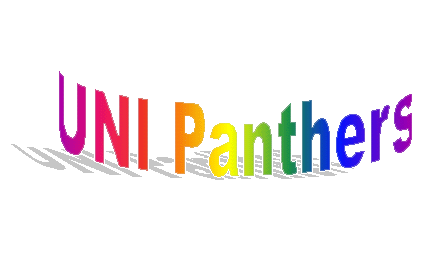
Spring 2007 Computer Skills and Concepts
First eleven weeks - Back to c021.html c021.html current page (last 5 weeks)

First eleven weeks - Back to c021.html c021.html current page (last 5 weeks)
| Week | Dates | Topics | Homework, Quizzes, lecture reviews. |
|---|---|---|---|
| 1 | 01/08-01/12 |
Class #1 summary.
To be used in conjunction with the day #1 handout
and diagram.
Class #2 summary. To be used in conjunction with the day #1 handout and with a future textbook BookOnCD Lab assignment. Here is a link to the Wednesday binary handout that you received. You are NOT expected to understand this yet, so no worries there! :-) | Read chapter one, section A
Read chapter two, section A The FOUR GENERATIONS of electronic digital computer are:
|
| 2 | 01/15-01/19 | ... | Colors and web pages and hexadecimal specification of the RGB (Red, Green, Blue). |
| 3 | 01/22-01/26 | sunny.uni.edu - My Account on sunny, where you will also have a web page. | Machine
cycle (fetch/execute cycle) pages 100-103 lecture review/summary.
The day the projector went out in ITTC 27 classroom.
|
| 4 | 01/29-02/02 |
Demonstrated the fetch/execute cycle to reinforce concepts of Mp (RAM or
primary Memory) and CPU in preparation for understanding cache memory
(L1 cache and L2 cache) to be explained next week.
|
We did the Accessory program called Paint in the Friday hands-on class.
Instead of a BODY BGCOLOR= we did a BODY BACKGROUND= and used your PAINT produced graphic at the BACKGROUND graphic in a feb2.html web page file. |
| 5 | 02/05-02/09 |
See solution for Quiz 2 Spring 2002 handout and 02/05 in class exercise. Just do View menu, Source command (for Microsoft Internet Explorer web browser) to see the HTML. (View menu, Page Source for Mozilla Firefox web browser application).Assignment One Due on Monday February 5th.
FRIDAY - SABIN 227 Computer Lab for Photoshop |
REMINDER: SABIN 227 Computer Lab for
Friday's class this week.
|
| 6 | 02/12-02/16 | TEST ONE
FRIDAY Feb. 16th | Test One Study Guide and main topics. |
| 7 | 02/19-02/23 |
SuperPaint
combined MacDraw and MacPaint capabilities into one program.
Review of 2/21 class on Vector (object-oriented) versus Bitmapped
(raster) graphics.
Relevance of MacDraw versus MacPaint issues to HTML and Structural versus presentational markup. Nice anecdotes from 1984 period on Macdraw versus Macpaint and graphic design in its infancy. |
Digital Media chapter 7 assignment
is due on Friday, March 2nd.
|
| 8 | 02/26-03/02 |
Digital Media chapter 7 assignment
is due on Friday, March 2nd.
No Photoshop class - UNI snow day | |
| 9 | 03/05-03/09 | Spring break is almost here. |
Wednesday, March 7th EXCEL
spreadsheet TEXT functions review. Know these functions.
LEFT, MID, RIGHT, FIND, CONCATENATE. Which have two arguments,
which have 3 arguments, which have an unlimited number of arguments.
Two of them actually can either have two arguments or three arguments.
|
| 10 | 03/21-03/23 |
No Class on Monday 03/19
Class in WRT 112 Lab on Friday. Class in Studio IT 2 on Monday (3/26) |
Class in Studio IT 2 (room 136 of ITTC) on Wednesday 03/21Up just one floor from our classroom. Flash for hands-on class on Wednesday, March 21st is Roman Numeral IV in the OL, i.e. LI #4. |
| 11 | 03/26-03/30 |
Class in Studio IT 2 on Monday (3/26)
|
VIP: FRIDAY 03/30 WRT 112 Lab classTest Two on Monday 4/02 |
| 12 | 04/02-04/06 |
Test Two on Monday 4/02 |
Web Page assignment using either
Notepad
or the pico editor on sunny.uni.edu to create the HTML.
We have StudioIT 2 reserved on the following dates and times: April 4th from 9-11am - Wednesday April 6th from 9-11am - Friday April 13th from 9-11am - Friday April 16th from 9-11am - Monday 810:021 9 MWF http://www.cns.uni.edu/~jacobson/c021.html 810:023 10 MWF http://www.cns.uni.edu/~jacobson/c023.html |